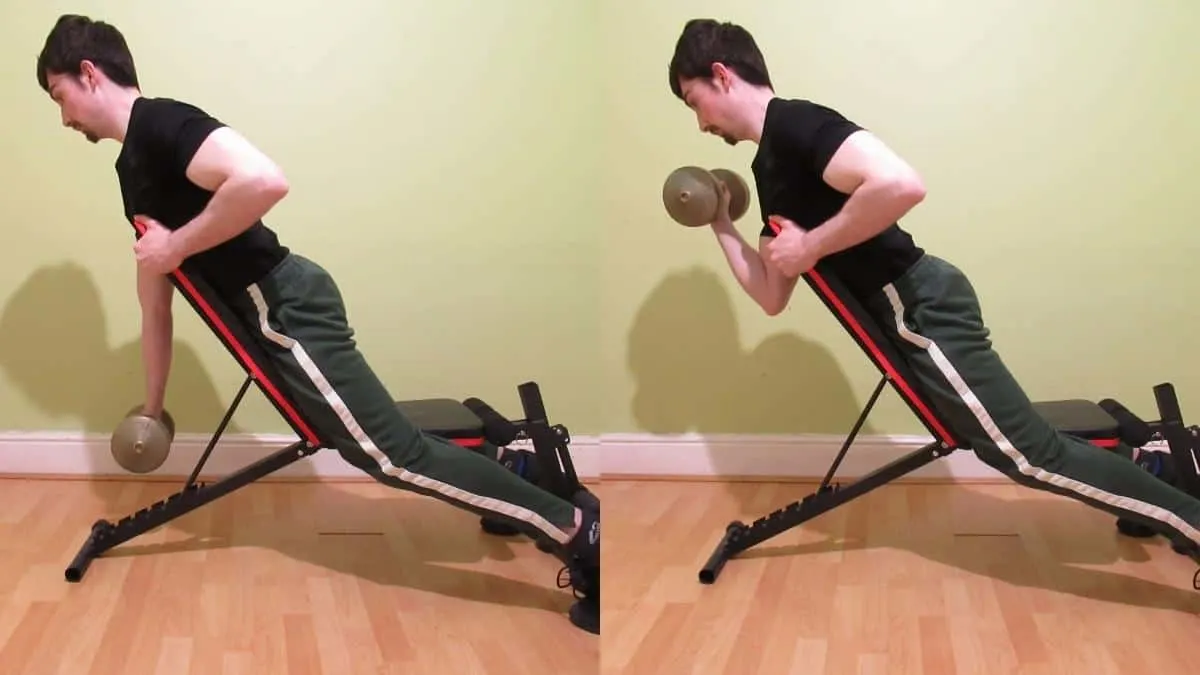The single arm spider curl is a highly effective exercise for isolating the biceps muscles because you only need to focus on working one arm at a time. The downside to this, of course, is that the one arm spider curl takes twice as long to perform as the regular spider curls exercise.
However, if you have bicep muscle imbalances that you need to work on, then this unilateral bicep drill is definitely worth the extra time and effort.
Related Exercise: Reverse grip spider curls
Single arm spider curl exercise details
- Main Muscles: Biceps brachii
- Secondary Muscles: Brachioradialis, brachialis, forearm flexors
- Exercise Type: Strength
- Exercise Mechanics: Isolation
- Difficulty Level: Beginner
- Equipment Needed: Dumbbell, adjustable bench
How to do one-arm dumbbell spider curls
- Set the back pad of a weight bench to a 60-degree angle.
- Grab a moderately light dumbbell with an underhand grip.
- Sit on the bench in a reverse position with your torso pressed against the back pad.
- Let your arms hang down behind the backrest.
- Curl the hand that’s holding the dumbbell toward your shoulder.
- Keep curling until the underside of your forearm makes forceful contact with your biceps.
- Hold the contraction for a full second, and then lower the weight under control until you reach full elbow extension.
- Repeat the motion with your other arm and perform 3-5 sets of 10-15 reps in total.
Single arm spider curl pros and cons
Single-arm spider curls are excellent for isolating your biceps and limiting the development of annoying muscular imbalances. However, training each arm separately means spending more time in the gym, which is a trade-off that’s not worth it for everyone.
Pro: Excellent muscle isolation
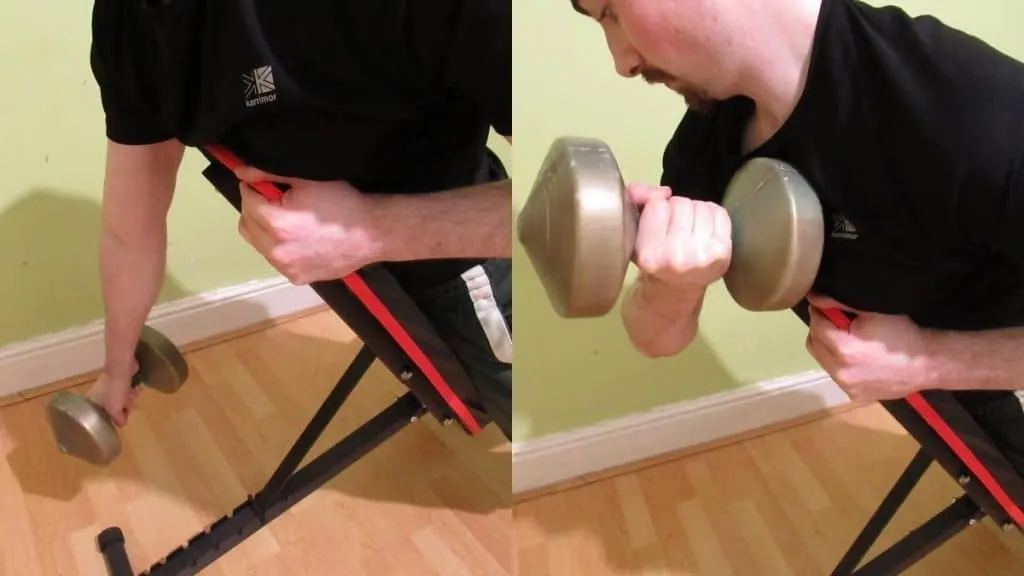
The one-arm spider curl provides virtually unrivaled bicep isolation because you only need to focus on working one arm at a time. As such, you’ll naturally be able to invoke the strongest possible mind-muscle connection because your attention won’t be split between two different limbs.
You may also find that you’re stronger when you train each arm individually because your central nervous system can apply all of its force toward lifting a single dumbbell, which is less complicated for it than curling two weights simultaneously. [1]
Con: Takes more time
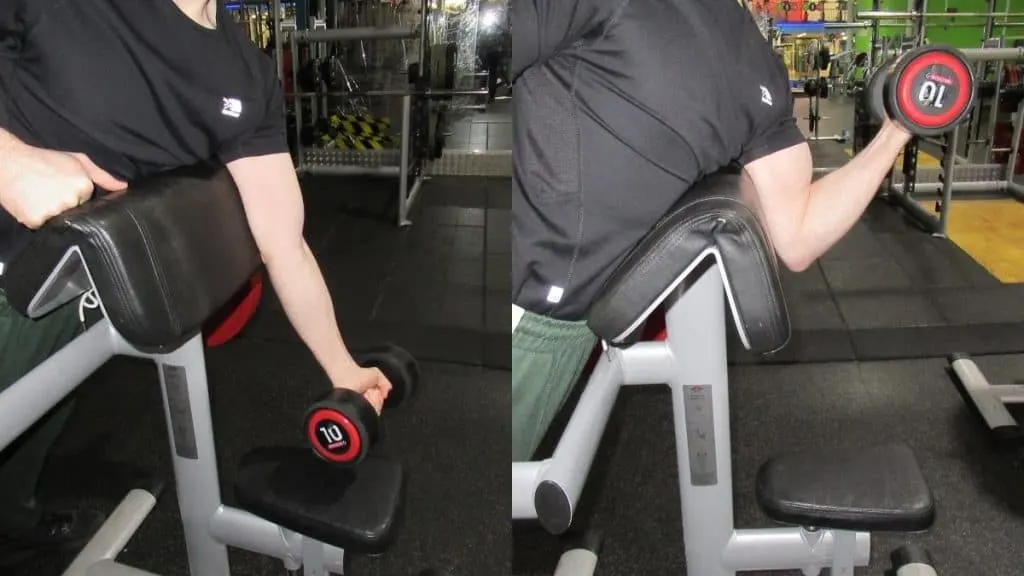
Seasoned bodybuilders may well relish spending more time in the weight room. But if you’re short on time, have a busy lifestyle, or just don’t fancy living in the gym, then the single-arm spider curl may prove to be more hassle than it’s worth.
In this case, you can speed up your workout by performing barbell spider curls. Not only does this version let you lift heavier than our dumbbell variation, but it’s also approximately twice as efficient to perform.
The drawback is that it’s difficult to reach down and grab the bar when your body is braced against the bench, which often means asking for assistance from another gym-goer. With the single-arm version, on the other hand, you can easily set up for the exercise while holding the dumbbell in your hand, which means that you don’t have to expend needless energy attempting to hoist the weight off the floor.
Pro: Simple setup
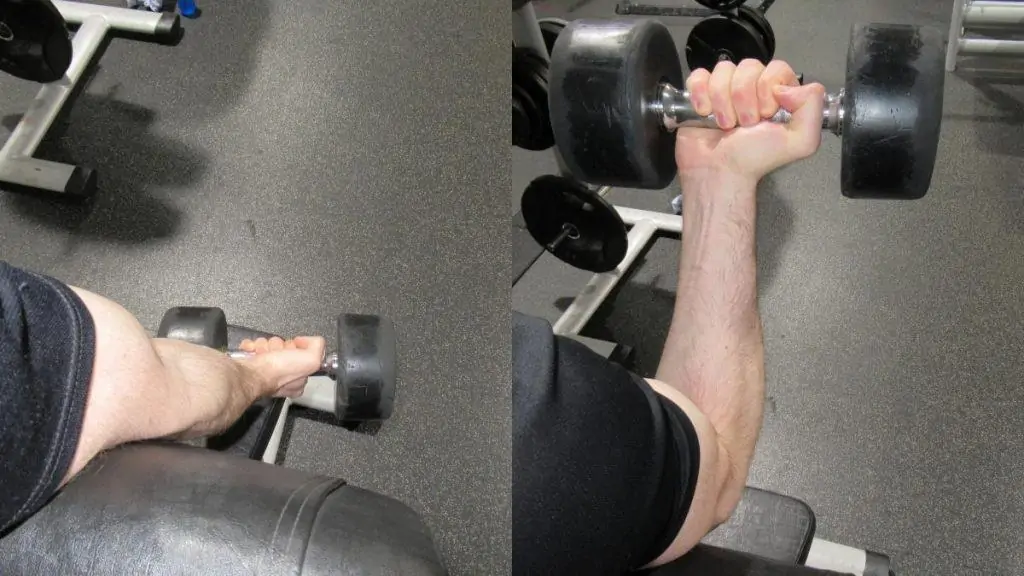
As mentioned, the one arm spider curl is incredibly straightforward to set up because you can hold the weight while you’re getting your body in position.
Conversely, if you were to do incline EZ bar spider curls instead, then you’d risk having the bar roll away from the bench while getting your body in the proper position. Moreover, it can be challenging to even reach the bar if you have short arms, which inevitably means asking someone to pass it to you before every set.
Ultimately, by doing this exercise one arm at a time, you’ll likely be able to place more tension on your biceps because you don’t have to waste energy (physical and mental) figuring out how to get the weight into your hands.
Con: May feel off balance
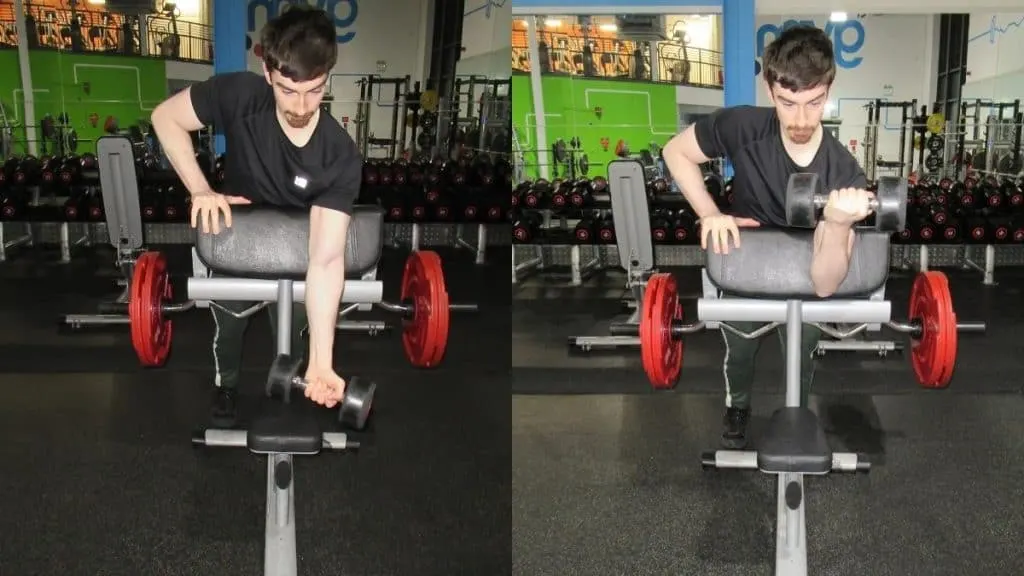
If you’re lifting a heavy dumbbell during the single-arm spider curl, then there’s a decent chance that you’re going to feel off-balance. This kind of training has its place, but it may ultimately impair your ability to train your biceps. [2]
The solution is to perform high repetitions and/or do the exercise at the end of your workout when you naturally need to lift lighter weights due to the muscle fatigue that you accumulated over the course of your session.
On the other hand, someone who can lift weights that are so heavy that balance may become an issue probably already has the core strength to match that of their biceps.
See Also: Single arm reverse grip bicep curl
Conclusion: What results will you get from the one arm spider curl?
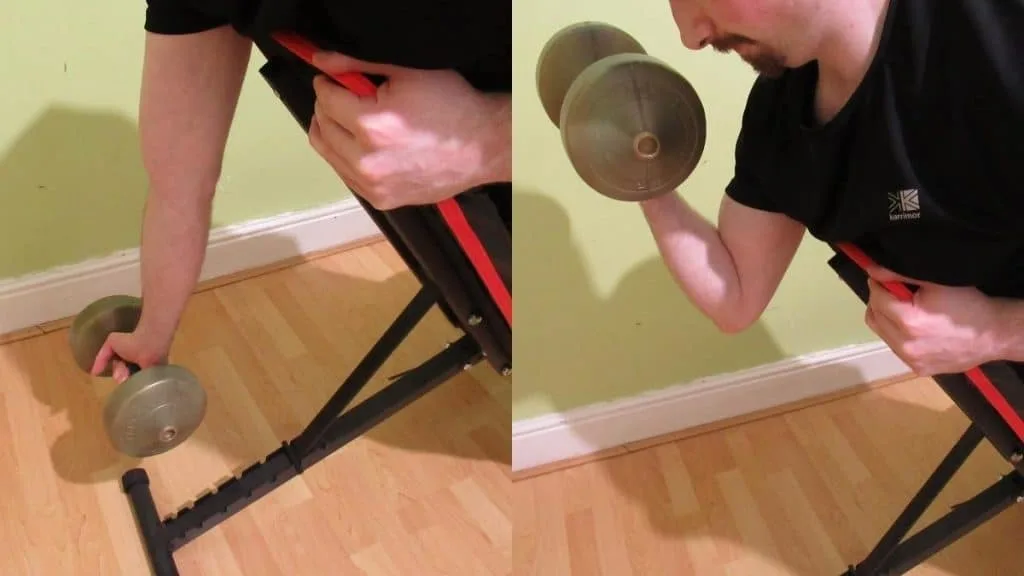
One-arm dumbbell spider curls are ideal for making sure that both of your biceps are getting the same amount of work, which will help you to sculpt more proportional arms.
Similarly, single-arm spider curls help to improve your mind-muscle connection because you don’t have to split your focus over two different limbs. This will result in a better muscle pump because you’ll naturally be able to contract your biceps more intensely when you only need to focus on training one arm.
The only real downside, a drawback which is also shared by single-arm dumbbell hammer curls, is that this unilateral exercise takes roughly twice as long to complete as a standard bilateral movement.
This is fine if you love lifting weights. But if you like to get in and out of the gym, then you might be better off sticking to more efficient exercises that enable you to train both arms together.
References
- Why strength depends on more than muscle: Neural adaptations could account for differing strength gains despite similar muscle mass. (2017, July 10). ScienceDaily. https://www.sciencedaily.com/releases/2017/07/170710091652.htm
- Why Unilateral Training Is important. (2018, February 28). Azumio. https://www.azumio.com/blog/fitness/why-unilateral-training-is-important

